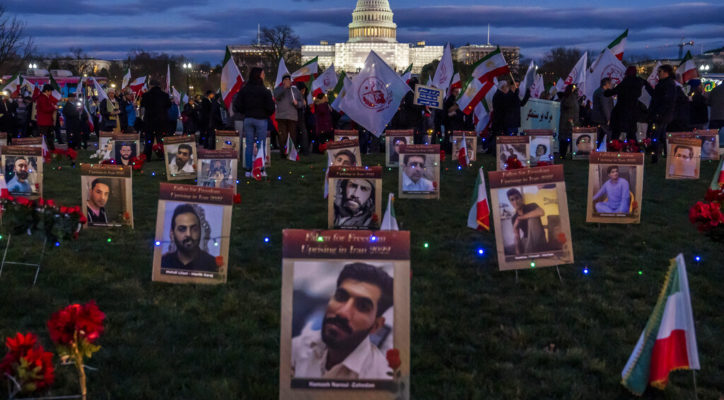The number of prisoners executed in Iran jumped 88% in 2022, amid ongoing anti-regime protests sparked by death of Mahsa Amini in September.
By Ben Cohen, The Algemeiner
Executions carried out by the Iranian regime soared by 88 percent in 2022 compared with the previous year, a new report from an Iranian human rights organization has revealed.
In its annual report on the state of human rights in Iran, the Human Rights News Agency (HRANA) — founded in 2005 by a group of advocates — observed that the majority of the executions were “reported by independent sources and human rights organizations, indicating that 65 percent of executions are carried out in secret or without any public notice.”
A total of 565 executions were carried out, the report said, two of them in public.
Iran is consistently among the top countries in the world for the number of executions it carries out, coming second only to China in 2021, according to the Death Penalty Information Center, an NGO.
Published on Monday, the HRANA report coincides with the news that 100 people detained for participating in the historic anti-regime protests that have raged across Iran since September are facing the death penalty.
At least four protestors are reported to have already been executed, while nearly 500 people have so far been killed by security forces, including 34 women and 67 children.
Throughout the year as a whole, 845 people were shot by security forces, 571 of whom lost their lives, according to the report.
The 65-page report was based on collection, analysis, and documentation of over 13,000 reports from 267 news sources from January 1 to December 20, 2022, HRANA said.
The report noted that there were inconsistencies when it came to reporting human rights abuses across the country.
“Despite a 128 percent increase in reports of human rights violations from provinces other than Tehran when compared to last year’s Annual Report, data from this year still indicates that smaller cities lack adequate reporting and monitoring of human rights,” it stated.
“There exists a major discrepancy between the capital, Tehran, and other parts of the country in terms of the number of published reports.”
Over the weekend, hardline clerics in Iran issued a statement urging harsher punishments against the protestors who took to the streets following the death on Sept. 16 of Mahsa Amini, a young Kurdish woman, at the hands of the regime’s morality police for allegedly wearing her hijab, or headscarf, improperly.
The Association of Qom Seminary Teachers, a group loyal to “Supreme Leader” Ayatollah Ali Khamenei, declared that anyone who “instigates fear in society” should be considered “mohareb” — an enemy of God — and therefore eligible for punishments including death, crucifixion and the forced amputation of limbs.




